What is the capital of Egypt? Cairo, of course. Or not, depending on the time we are referring to. Without counting those of the pharaonic period, in which Buto, Busiris, Tinis, Hieracómpolis, Buto, Memphis, Ity-tauy, Avaris, Thebes, Alexandria and some others followed one another, if we go back in time from today we can count Al- Qatta'i (9th-10th centuries), Al-Askar (8th-9th centuries), and Fustat. These last three were progressively absorbed by the excessive growth of Cairo, but there are still architectural vestiges in its old town.
Not in very good condition, it must be said, since some are almost ruins and others are in a sorry state of abandonment in a city in which the Pyramids of Giza and the Citadel of Saladin practically monopolize the visitor's attention.
The Ibn Tulun and Amr mosques are the main monuments of that stage of a millennium ago, although the successive reforms have somewhat distorted their original appearance, especially in the second. In any case, they are the oldest surviving examples of the occupation of the place by the Arabs.

The Muslims began their conquest of Egypt in 634 AD, shortly after Muhammad's death. In 641, Alexandria, the capital, fell to Umar ibn al-Khattab, the caliph of the orthodox dynasty that preceded the Umayyad period. Umar had taken over from Abu Bakr, the first caliph and successor of the Prophet in opposition to his son-in-law, Ali ibn Abi Talib, in that dispute that would lead to the split of Islam between Shiites, Sunnis and Kharijites.
If Abu Bakr managed to overcome all the uprisings that were formed against him and the new faith, settling it in the Arabian Peninsula and beginning the expansion at the expense of the Sassanid Empire, Umar ibn al-Khattab (who also had a family relationship with Muhammad when marrying his daughter with him) launched to seize the eastern Mediterranean taking Syria, Palestine and Mesopotamia.
In the middle they also appropriated Egypt, which was then part of the Byzantine Empire. The caliph decided that Alexandria was not a good place to establish the capital, since it was on the west side of the Nile and this meant that difficult terrain such as the delta separated it too much from Arabia with that natural obstacle. It was not something new because he had made the same decision in Iraq, so he commissioned his general Amr ibn al-As, who had led the victorious campaign with the support of the Copts, to create a new city on the fringe. west of the river.
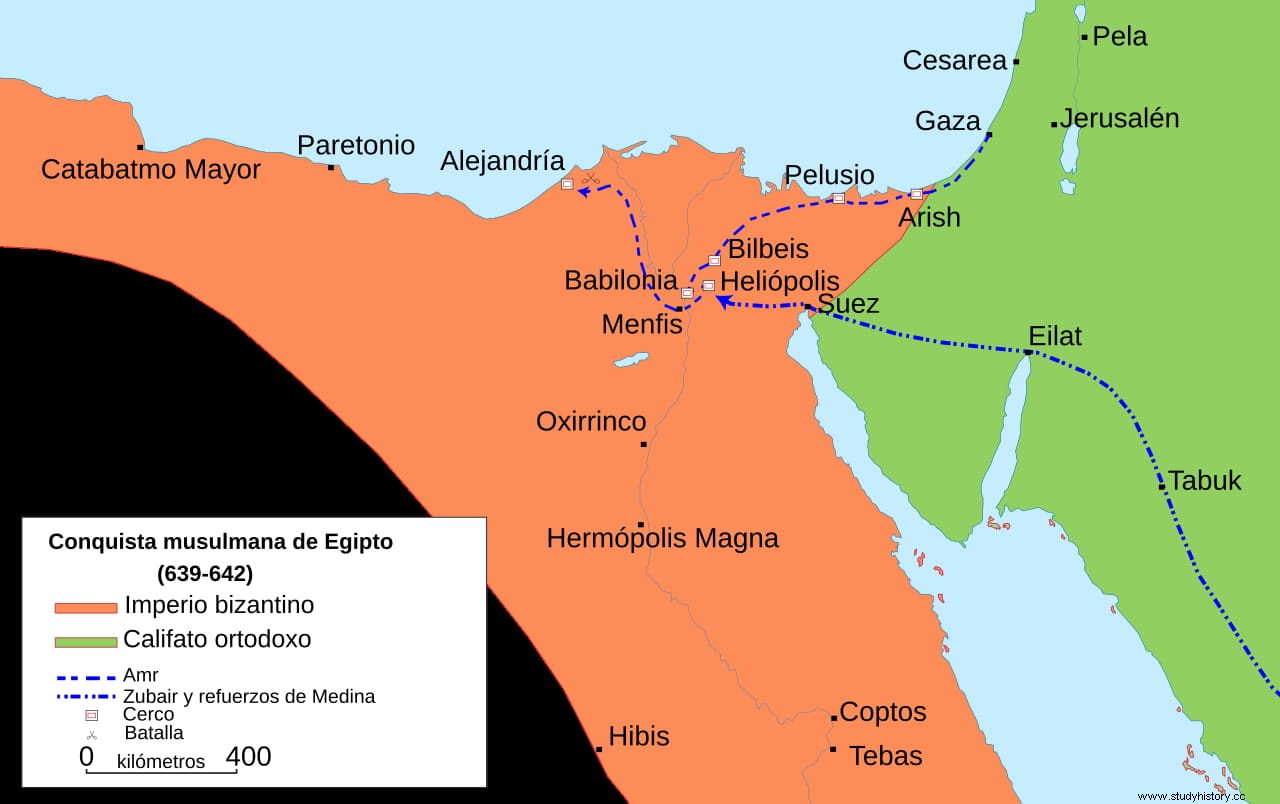
The foundations of cities usually credit legends behind and here there was no exception. They say that when Amr ibn al-As was preparing to set out to besiege Alexandria, he saw that a pigeon had nested in his tent and so he ordered not to dismount it to avoid disturbing the bird's incubation, since he interpreted it as a sign divine. When he returned he had laid an egg, so Amr decided that this would be the place for the new capital.
It was north of the ancient Roman fortress of Babylon, so called because that strategic southern part of the delta (near Trajan's Canal, today within the Coptic Quarter of Cairo) was known as the Egyptian Babylon , when its creation is attributed to Cambyses II in 525 BC
For all this, it was given the name of Miṣr al-Fusṭāṭ, which in Arabic means City of shops , alluding to the fact that in those beginnings there were still no buildings but the tents of the troops; The first architectural construction was the aforementioned Mosque of Amr, erected on the land occupied by the store of Amr ibn al-As and which, in fact, was the first to be built in the recently conquered country.
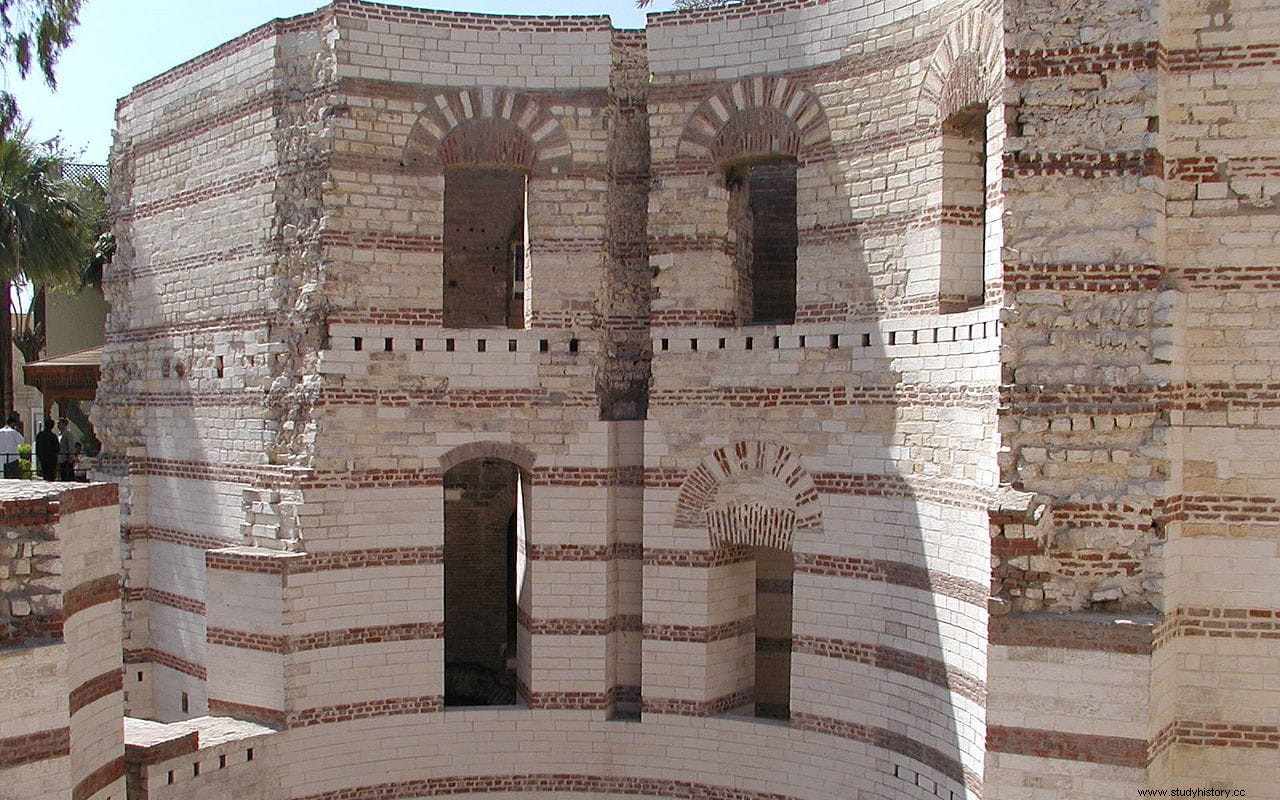
Logically, at first the population was made up of soldiers and their families, who were able to settle more or less permanently because Fustat was conceived as a kind of base of operations from which to confront the Byzantine Empire and develop new campaigns to take over the territory. North Africa, although a few decades later, in 670, it was displaced in that role by Kairouan, which was in Ifriquiya (now Tunisian territory), more appropriate for expansion to the west.
However, it did not take long for new settlers to arrive from Arabia and Yemen, in addition to other groups who came in search of fortune such as former Roman soldiers, mercenaries, Jews and Copts. In this way, Fustat began to grow urbanistically around the mosque, first with the seats of government and administration, then with houses, and all of this organized in areas called khittas , in which people settled according to the tribe to which they belonged.
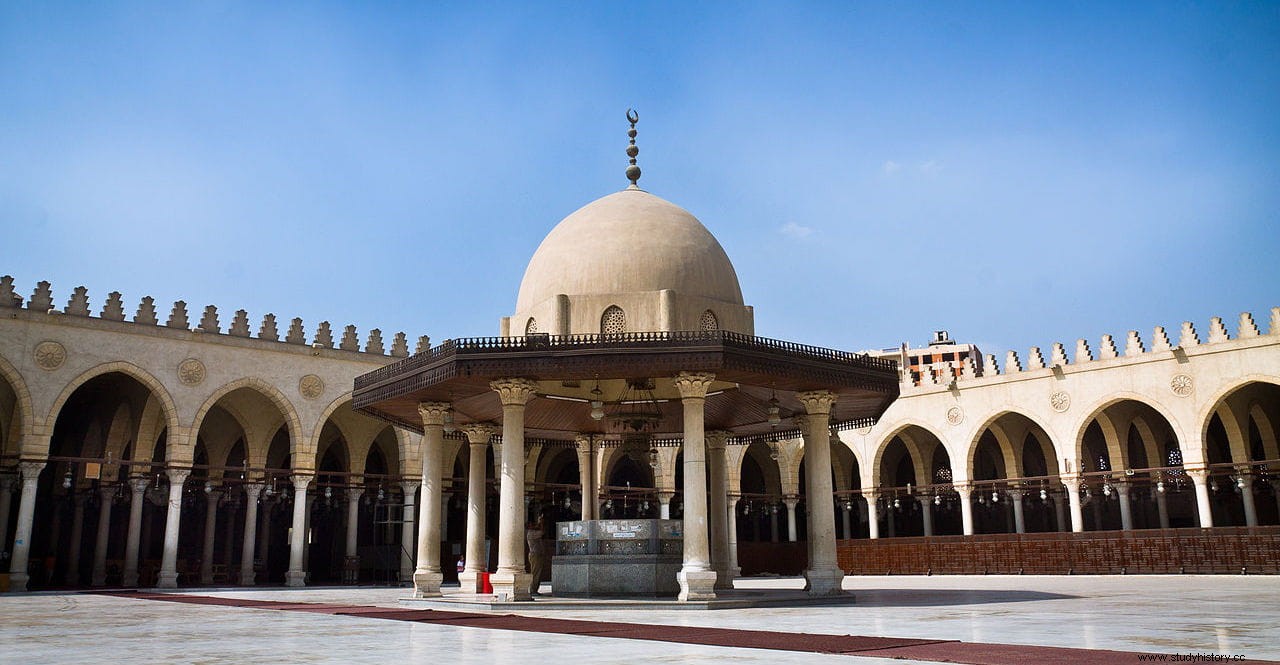
Since Egypt was still an immense granary, as before for Rome, the Umayyad Caliphate established in 660 gave priority to that country as a provider of resources and, therefore, special attention was paid to the characters that were designated for its government from Fustat. This was only temporarily altered between 750 and 868, when the dynasty was overthrown by the Abbasids, who moved the capital of the caliphate from Damascus to Baghdad and the Egyptian from Fustat to Al-Askar.
Then the Fatimids arrived and made another change, bringing the capital to Al-Qataa'i, but it was destroyed in 905 and Fustat regained its lost importance. In fact, the Fatimids also centered their power in the land of the Nile and, thus, the splendor of the city did not decline either when General Gawhar preferred to found a new city a little further north, near the sea, which he called Al Qahira, that is that is, Cairo, and where the caliph Ma'ad al-Muizz Li-Dinillah settled in the year 971.
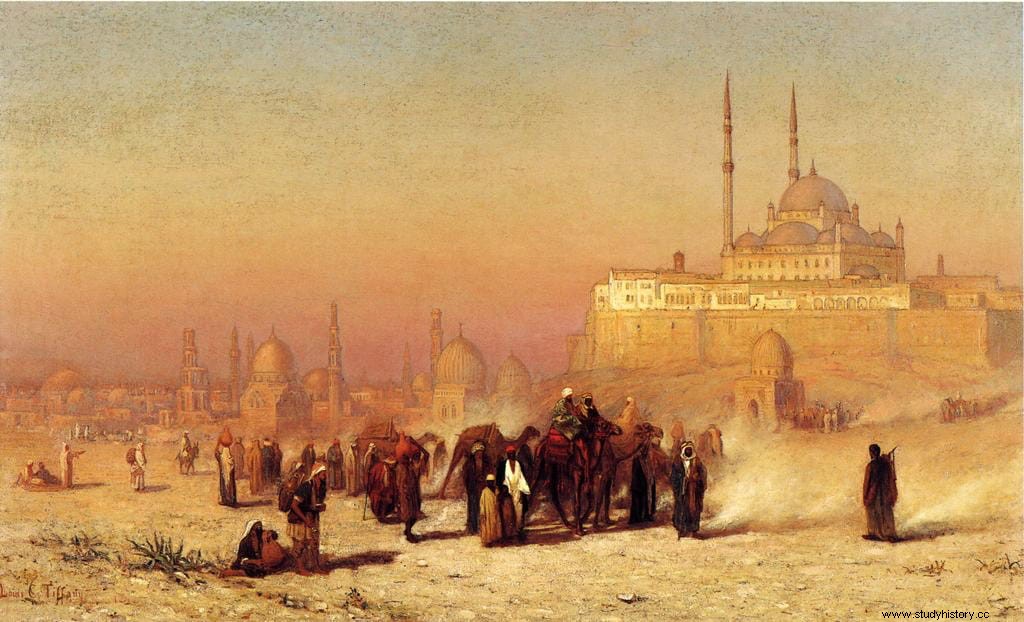
He left Al-Mansuriya, an extension of Kairouan where he had his court and which he left in the hands of the Zirid Berbers, but his establishment in Cairo was not inconvenient for Fustat because it was conceived only as a court seat, while the administration continued to be carried from the existing capital. Hence, it continued to grow and enrich itself throughout the 10th century. Markets, gardens, seven-story buildings, artisan workshops, art schools and a number of inhabitants that already reached a third of Baghdad attested to an economic strength which did not subside until the twelfth century, when what can be considered the prologue of the Second Crusade brought misfortune.
It was in the year 1168. Amalric I, Count of Jaffa and Ashkelon who would later be proclaimed King of Jerusalem, led an expedition against Egypt to punish the Fatimids for refusing to pay him taxes. The Christians took advantage of the weakness of the caliph, an eighteen-year-old named Al-Adid who remained in power only thanks to the cunning of his vizier Shawar, the one who really pulled the strings.
Shawar, a true artist of diplomatic strategy, had reached the Egyptian government in a coup d'état after which he ruthlessly murdered all the relatives of his predecessor and in 1164 managed to reach an agreement with Amalric not only to prevent the invasion but also to attacked a rebel general named Shirkuh, Saladin's uncle.
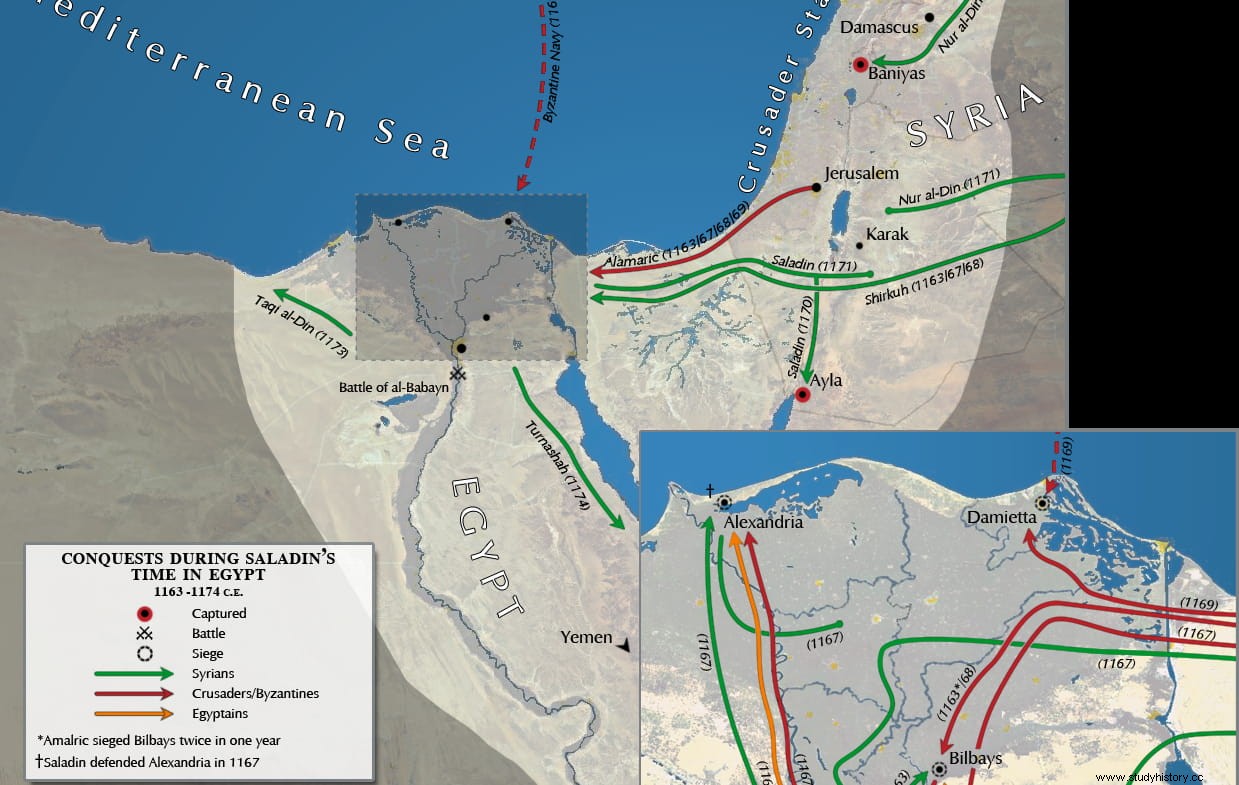
Four years later Amalric returned with his army and Shawar, in one of his pirouettes, allied himself with his former enemy to confront the Christians. However, their advance was unstoppable:they took and looted Bilbei, exterminating almost all of its inhabitants, and they reached Fustat demanding their surrender under penalty of putting them all to the sword. Powerless, Shawar ordered the city evacuated and set on fire; according to the Egyptian historian Al-Maqrizi, twenty thousand jars of naphtha were distributed and the fire lasted fifty-four days. Amalric was left without the loot that he expected and on top of that he was later defeated by the Syrian army of Shirkuh who, in the end, took the opportunity to take control of the country. As Shawar died shortly after, the gates of Egypt were left wide open for Saladin, who proclaimed himself vizier and inaugurated the Ayyubid dynasty.
Fustat, reduced to ashes, became a neighborhood of Cairo and the following century the Mamluks used it as a simple dump, mixing garbage with the lower strata of the population; Thus, it is curious that thousands of Cairenes live with waste while many others do so among the tombs of the so-called City of the Dead . That was the sad use that Fustat had in the future and, at least for now, the scarce tourism has not been able to reverse the situation.
